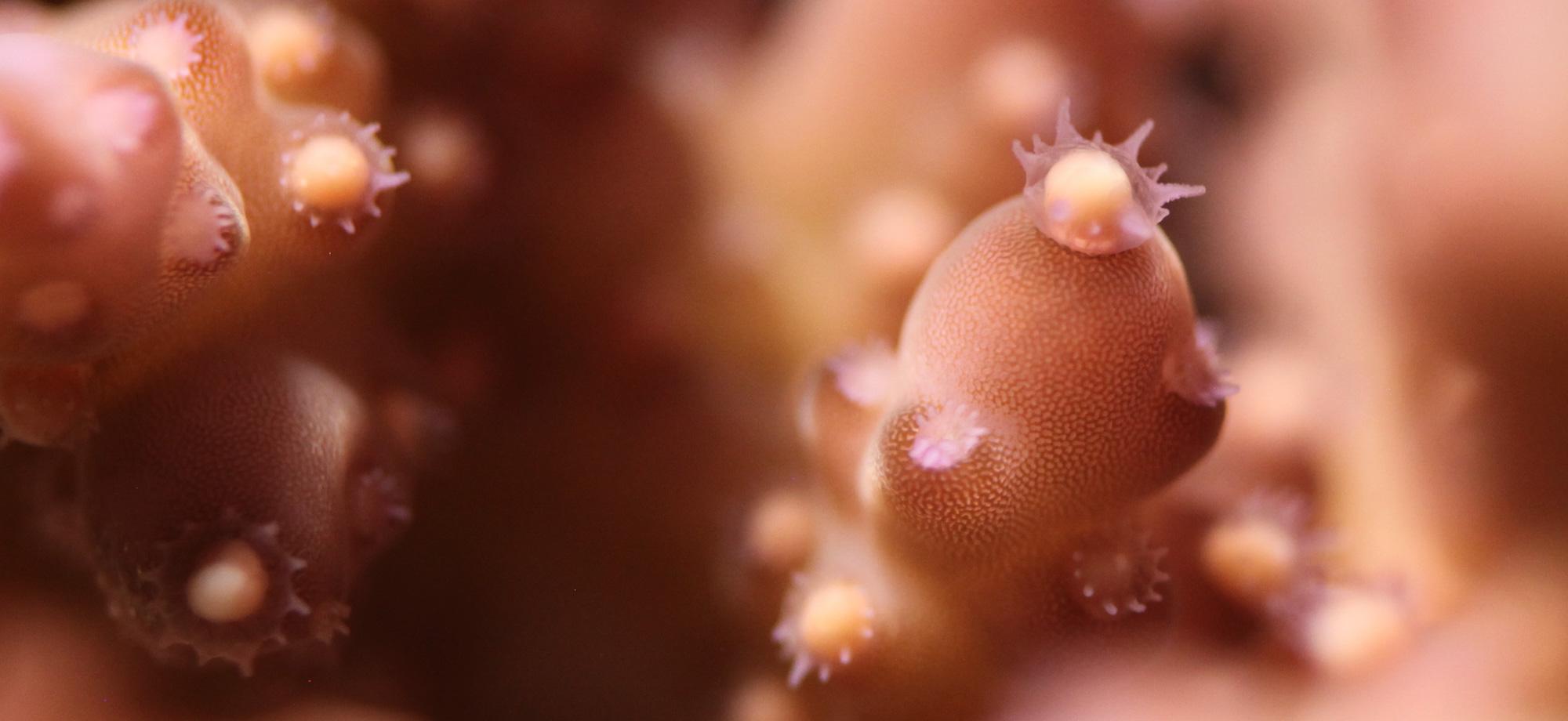The National Sea Simulator supports the successful propagation of a range of marine organisms including coral, sponge and crown-of-thorns starfish.
With specialised infrastructure, SeaSim is able to replicate in situ spawning conditions in an experimental setting.
Ideally located adjacent to the Great Barrier Reef, the SeaSim also has ready access to reproductively fit specimens.
Collectively, SeaSim’s unique facilities and location provide unprecedented opportunities to undertake rigorous and innovative experiments that examine reproduction and the early-life history of marine invertebrates.
Coral spawning
Coral mass spawning is an annual natural phenomenon where multiple species of corals synchronise the release of sperm and eggs over several days following the full moon. For example, along the Great Barrier Reef spawning usually occurs after the full moon in October and November.
During spawning, the coral sperm and eggs float to the surface of the ocean, fertilise and then develop into larvae. The larvae eventually settle on the reef, creating new coral colonies. The spawning and larval phase of corals is a key event for the production of future coral generations and the replenishment of coral ecosystems.
It is during these very narrow windows of opportunity that researchers have the capacity to collect samples of coral larvae and study the reproductive biology of broadcast spawning corals.
SeaSim’s coral spawning success
Each year, over 250 coral colonies from more than 25 different species successfully spawn in the SeaSim, producing over 15 million larvae. Sophisticated larval rearing facilities and dedicated settlement systems allow for the mass settling of more than 100 000 larvae per day on experimental substrate.
State-of-the-art experimental facilities enable these larval and juvenile corals to be used in a variety of manipulative experiments looking at impacts such as climate change, ocean acidification, pollution and sedimentation.
AIMS scientists and collaborators are focused on research on reef recovery, adaptation and restoration for a warming future. These are the main focus of two major programs - the Australian Government-funded Reef Restoration and Adaptation Program, and the Australian Coral Reef Resilience Initiative.
Spawning activities and collaborative opportunities
Along with AIMS researchers and students, SeaSim attracts national and international collaborators. Researchers travel from all over the world to work in the SeaSim during the Great Barrier Reef coral spawning season. Scientists from a range of institutions work independently or alongside AIMS staff, contributing to many high-profile projects that seek to:
- understand how climate change impacts the health of juvenile and adult corals and sponges, as well as the inheritance of temperature tolerance;
- attempt to enhance coral resilience;
- conduct experiments that examine the effects of dredging sediments, water quality and climate change on coral reproduction and their early life stages;
- understand the requirements for coral settlement and recruitment:
- field deployment of coral recruits to gain insights into survival and early growth to aid in reef restoration projects:
- develop new tools for conservation and restoration, including extending the Great Barrier Reef coral cryo-repository; and
- investigate food requirements of crown-of-thorns starfish in order to understand why these animals have destructive outbreaks.

